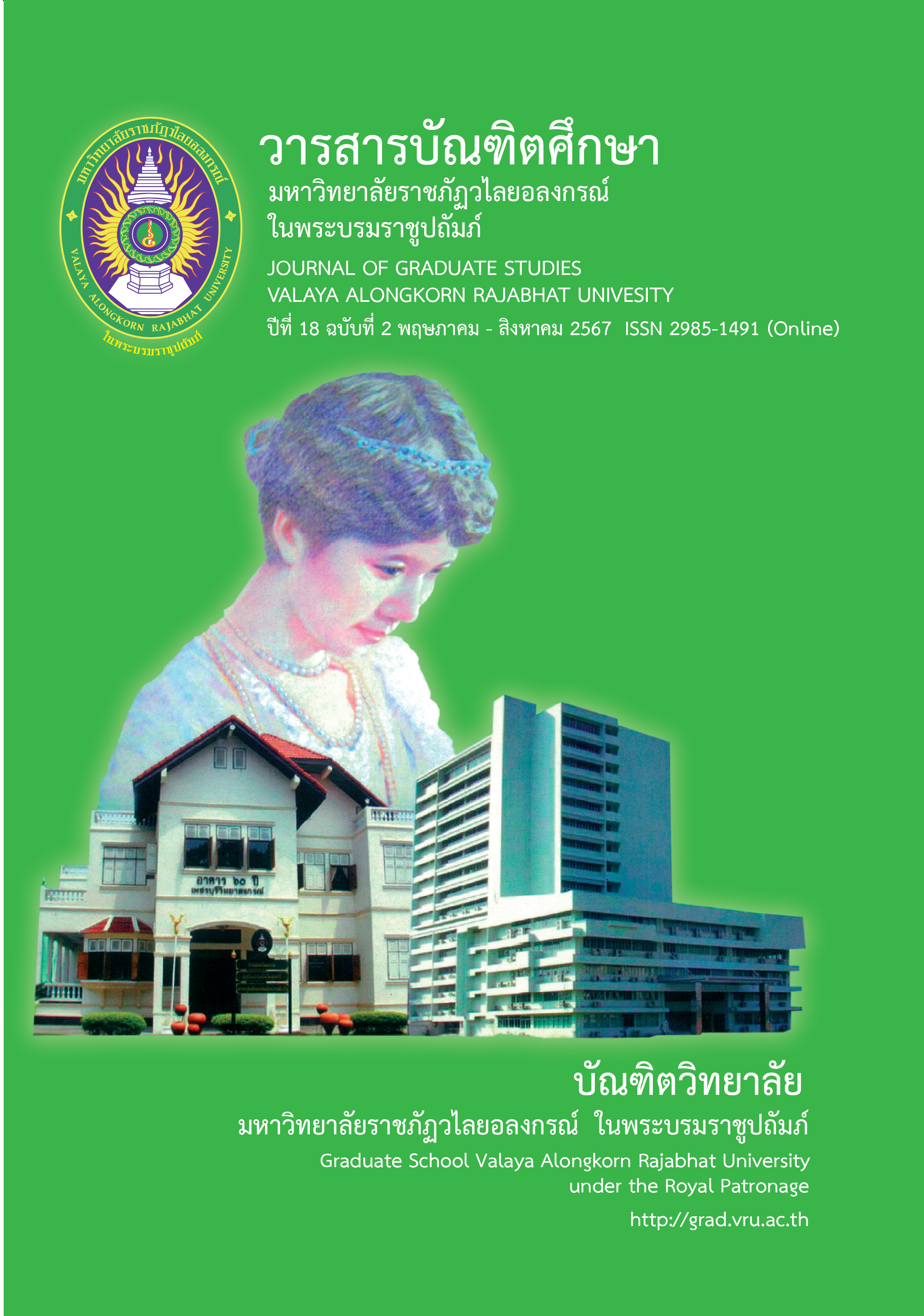EFFECTS OF USING THE ACTIVITY - BASED GUILFORDS'S THEORY OF CREATIVITY TO ENHANCE WRITING SUMMARY SKILLS OF GRADE 6 STUDENTS
Main Article Content
Abstract
The purpose of this research were twofold: 1) to compare the academic achievement of students before and after learning by employing activity-based learning in conjunction with Guilford’s theory of creativity to develop writing skills among Grade 6 students, and 2) to evaluate the progress of these students’ writing abilities. The sample group consisted of grade 6 students from Kasetsart University Laboratory School Center for Educational Research and Development during the second semester of 2022, with a total of 40 students participating specifically selected. The research tools included 1) an activity-based learning plan incorporating Guilford’s creative theory, and 2) a learning achievement test. Data analysis involved calculating the mean, standard deviation, t-test, and relative development scores.
The results indicated that 1) the academic achievement of students revealed a statistically significant improvement in their performance after learning at .05 level, and 2) the evaluation of writing skills, specifically in summarizing, demonstrated progress after implementing activity-based learning in combination with Guilford’s theory of creativity. Overall, the relative development scores indicated that the students’ average abilities were at a beginning level. ( = 36.79)
Article Details

This work is licensed under a Creative Commons Attribution-NonCommercial-NoDerivatives 4.0 International License.
บทความทุกเรื่องได้รับการตรวจความถูกต้องทางวิชาการโดยผู้ทรงคุณวุฒิ ทรรศนะและข้อคิดเห็นในบทความ Journal of Global of Perspectives in Humanities and Social Sciences (J-GPHSS) มิใช่เป็นทรรศนะและความคิดของผู้จัดทำจึงมิใช่ความรับผิดชอบของบัณฑิตวิทยาลัย มหาวิทยาลัยราชภัฏวไลยอลงกรณ์ ในพระบรมราชูปถัมภ์ กองบรรณาธิการไม่สงวนสิทธิ์การคัดลอก แต่ให้อ้างอิงแหล่งที่มา
References
Bureau of Acadamic Affairs and Educational Standards. (2019). Næwthāng kār nitheṣ̄ pheụ̄̀x phạtʹhnālæa s̄̀ngs̄erim kār cạdkār reīyn rū̂ cheing ruk (Active Learning) tām nyo bāy ld welā reīyn pheìm welā rū̂ [The basic education core curriculum B.E. 2551]. Bangkok: Bureau of Acadamic Affairs and Educational Standards.
Byrne, D. (1982). Class and the local state. International Journal of Urban and Regional Research. 6(1), 61-82. https://doi.org/10.1111/j.1468-2427.1982.tb00378.x
Chase, W. G. and Clark, H. H. (1972). Mental operation in the comparison of Sentences and Picture. in Cognintive in learning and memory. New York: John Wiley and sons.
Guilford, J. P. (1967). The nature of human intelligence. New York: McGraw-Hill.
Haris, D. P. (1969). Testing English as second language. New York: McGraw-Hill.
Heaton, J. B. (1967). Writing English language tests. London Landman Group Limited.
Kanjanawasri, S. (2013). thritsadī kānthotsō̜p bǣp dangdœ̄m [Classical testing theory]. Bangkok: Chulalongkorn Printing House.
Lado, R. (1964). Language teaching: A scientific approach. New York: Mc Graw-Hill Companies.
Saprueksri, S. and Aonpha, S. (2022). Kār phạtʹhnārūp bæb kār cạdkār reīyn rū̂ d̂wy kickrrm pĕn ṭ̄hān (Activity-Based Learning: ABL) r̀wm kạb thekhnoloyīpheụ̄̀x s̄̀ngs̄erim khwām pĕn nwạt kr læa p̄hl ngān s̄r̂āngs̄rrkh̒ s̄ảh̄rạb nạkreīyn radạb prat̄hm Ṣ̄ụks̄ʹā [The development of activity-based learning management integrated with technology to promote students' innovativeness and creative products]. Master's thesis Silpakorn University.


